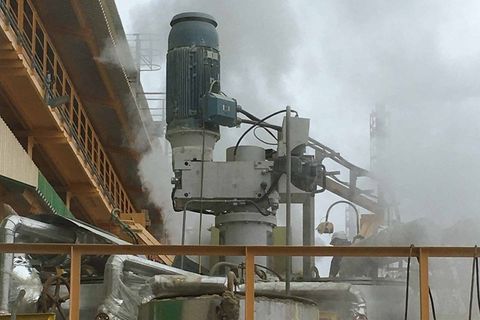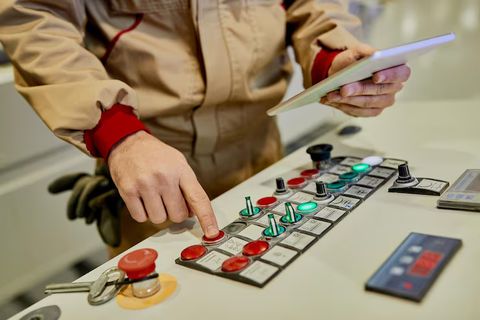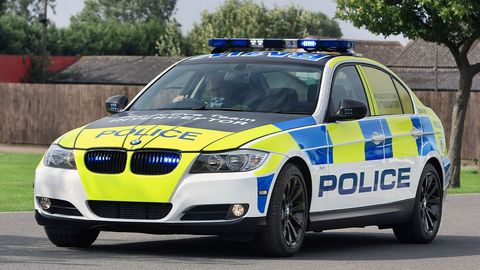Understanding Air Cleaners
Air cleaners or air purifiers, as they are commonly referred to, are apparatus for filtering out contaminants in the air to enhance the quality of indoor air. These methods help to filter and purify the air picking up dust, pollen, smoke, and other pollutants from the environment. Since at times the quality of the air indoors is worse than that outdoors, we have air cleaners as a shield against respiratory diseases, allergies, and asthma.
Key Features of Air Cleaners
When choosing an air cleaner, consider the following essential features:
HEPA Filtration: HEPA stands for High-Efficiency Particulate Air; the filter catches up on particles that are as small as 0.3 microns, such as dust, pollen, and pet dander.
Activated Carbon Filters: These filters are useful in the removal of odors, smoke, and volatile organic compounds – commonly abbreviated as VOCs.
UV Light Technology: UV-C air cleaners kill bacteria, viruses, and mold spores, which could be some extra cleaning capacity added to several air cleaner models.
Coverage Area: Air cleaners are made for particular dimensions of a room and thus should be chosen with the size of the space in mind.
Noise Levels: Low noise models ought to be taken into bedrooms and sitting rooms as they do not produce any noise.
Energy Efficiency: Hunt for low-energy appliances to help you save money since there is always a correlation between price, energy consumption, and performance.
Types of Air Cleaners
HEPA Air Cleaners: HEPA cleaners are especially for removing allergens since they have very high filtration capacity.
Ionic Air Cleaners: These utilize ionically charged structures to attract the particles. But they may generate a small amount of ozone as they work, despite being less noisy than conventional models.
UV-C Light Air Purifiers: Perfect for removing bacteria and viruses, these cleaners incorporate UV functionality to get rid of bad air.
Activated Carbon Cleaners: Especially useful for smokers and pet owners, these filters are some of the best for dealing with smoke smell and chemicals.
Ozone Generators: Despite its efficiency in fragrance removal, an ozone generator can cause controversy because of the health effects of ozone.
Benefits of Air Cleaners
Reduced Allergens: Cleaning equipment captures dust, pollen, and pet dander useful in providing comfort for allergy-affected individuals.
Improved Respiratory Health: They minimize the likely events of asthmatic episodes by trapping the potential triggers that may be in the air.
Odor Elimination: The smell that originates from cooking or pets and even cigarette smoke is removed by activated carbon filters.
Bacteria and Virus Reduction: UV-C and HEPA models prevent the circulation of airborne disease-causing organisms effectively.
Cleaner Living Environment: Cleaner air reduces deposits of dust and other particles, meaning that there are fewer surfaces to wipe and clean in a home.
Top Air Cleaners
Dyson Pure Cool TP04: This advanced HEPA air cleaner and fan has a sleek, compact design and is perfect for use throughout the year. It has a fashionable look and can clean the air and cool the room as well, and retails for about $500 and can be purchased on Amazon.
Honeywell HPA300: Marketed for its ability to minimize allergy-causing elements in homes, this air purifier is proficient in trapping dust, pollen, and dander from pets. It goes for between $250 in Walmart stores and is widely used by families in need of cleaner air.
Levoit Core 300: Measuring only 14.3 x 11.6 x 21.7 inches, this air cleaner is relatively cheap and equipped with a HEPA filter, making it suitable for bedrooms or offices. It currently sells for about $100 at Target and will provide customers with an economical means of improving their indoor air quality.
Blueair Blue Pure 211+: It is quite famous for its very high filtration level and elegant appearance, providing an indispensable level of protection from the particles floating in the air. Priced at about $300 in the Best Buy stores, this product reconciles form and function for a healthier home.
Coway Airmega 400: This smart air cleaner has been developed for use in large rooms and has high coverage with an efficient filtration system. Retailing at a truly affordable $550 from Home Depot, they are as efficient as they are convenient, with nuances like real-time air quality checks.
You can purchase these air cleaners from various platforms like Walmart (https://www.walmart.com/) and Home Depot (https://www.homedepot.com/).
Selecting the Right Air Cleaner
Here are the best air cleaners:
Assess Your Needs: Enumerate these particular problems as an allergy, smells of pets, cigarette smoke, etc.
Room Size: Make sure you have bought an air cleaner with adequate coverage to work within the size of the room in question.
Filter Replacement Costs: It’s important to also look at the filter lifespan and the cost of the same since they can be expensive in the long run.
Certification Labels: When searching for portable air conditioners, prefer choosing products with Energy Star certification and AHAM Verified labels indicating proper performance and efficiency.
Air Cleaner Care and Maintenance
Regular maintenance is key to the longevity and effectiveness of your air cleaner.
Filter Replacement: Most air cleaners have filters that need replacement every 3-6 months; the HEPA and carbon should have different timings.
Regular Cleaning: Reduced efficiency of operation can be as a result of obstruction of airflow by the pre-filters; hence, it must be cleaned monthly, and the air vents as well.
UV Bulb Replacement: If equipped with UV-C, replace the bulbs according to the manufacturer’s guidelines for best germ-eliminating results.
Monitoring Air Quality Sensors: For those models that have some sort of sensors, once in a while take time and reset them to ensure they record the best measurements.
From Air Cleaners to Healthier Home Environment
The use of an air cleaner will enhance the quality of air inside buildings because it is capable of removing contaminants, allergens, and hazardous small particles in the air. For families, this means a clean environment free of respiratory contaminants such as dust. More so for people with pets or smokers at home, air cleaners prove useful in providing cleaner air to breathe in. Unlike one-time use of products or short-term options that benefit only the current situation, an air cleaner benefits users in the long run in their health, comfort, and well-being.
Strategies for Optimising Air Cleaning
Placement Matters: Place air cleaners in places frequently occupied or where dust and other irritants are likely to be found such as the bedroom or living room.
Run Consistently: As we are carrying out the experiment, keep the air cleaner at a low speed for a steady improvement of air quality.
Close Windows and Doors: This helps the air cleaner work better by preventing pollutants from getting into the system in the first place.
Monitor Indoor Humidity: Some filters are vulnerable to humidity levels, and therefore, keep the humidity level in your home at an optimum level.
Challenges with Air Cleaners
Despite their benefits, air cleaners have some challenges:
Filter Replacement Costs: Some high-performance models have costly filters which result in higher ongoing costs.
Noise Levels: Unlike the modern cleaner models, others produce high-pitched noises when in high operation speed.
Limited Coverage: Some are small and fit one area, so more than one unit may be needed if an area is large.
Ozone Emissions: Both ionic and ozone-generating air purifiers emit ozone, and such a substance may trigger unfavorable reactions in some people.
Air Cleaners with Filter Change Feature
Current air cleaners contain LED lights that either blink or emit different colors to alert the user about the filer replacement. These useful signs make sure that the air purifier is still able to clean the air properly because it is time to clean the filters.
The LED light changes to blink or glow red or orange to indicate to users that the filter needs to be replaced. This feature makes it easier to maintain the air cleaner, which will avoid low performance resulting from the clogged or worn out filters. By replacing them as advised by the LED light, the air purifier is able to filter allergens, dust, pet dander, and other pollutants effectively for the wellbeing of the occupants of the room.
More About Air Purifier
An air cleaner purifier in Austria because more people are realizing the need to get quality air indoors. Most households and commercial establishments are spending on sophisticated air-cleaner machine in Austria and equipment that effectively clean the air. Especially preferred by consumers, the HEPA filter in Austria is a filter that can filter even the tiniest particles from the air, providing a clean air environment. Due to the vast range of air cleaner in Austria models to choose from, getting lost in choice should not be an issue anymore as manufacturers have provided people in Austria with various models to choose from depending on the size of the area that requires cleaning – from small personal air purifiers to massive commercial ones. As people become more educated about air quality problems, these solutions remain useful in providing a healthy environment for living and working.
Future Aspects of Air Purifiers
The future of air cleaner technology looks promising, with advancements focusing on smart integration which is portable air purifiers that can be commanded by an application on the owner’s smart device, and which also incorporates features for self-regulation of operations. Efficient implementation of the strategies of ecological design will lead to the reduction of energy utilization. The filters are expected to be cleaner, more efficient, and with the ability to trap a wider form of particles.
Conclusion
With air pollution on the rise, companies are encouraged to purchase a good air cleaner as it has the potential to change your life for the better. In addition to purifying air, the systems reduce allergens, bad smells, and possible health dangers from indoor pollutants. In this article, the basic classification, the characteristics, and the proper maintenance tips are outlined to help you choose the most suitable air cleaner for your home and your family habits. Technology can only improve in the future and so we may see air cleaners being more efficient and widely available than they are today for this reason it is easy to recommend air cleaners to anyone. Accept the change and breathe easily with the proper air cleaner at home.






